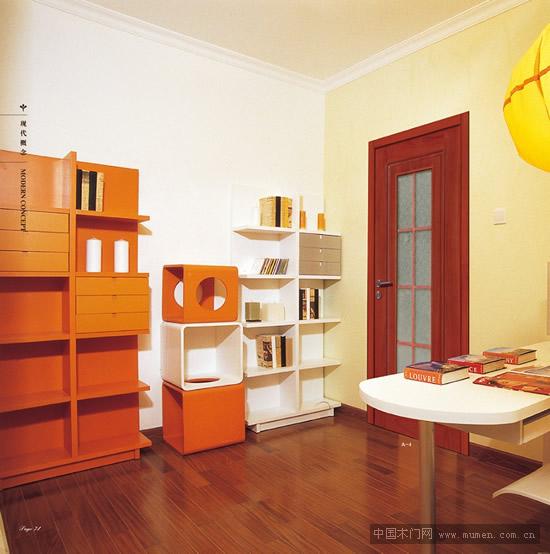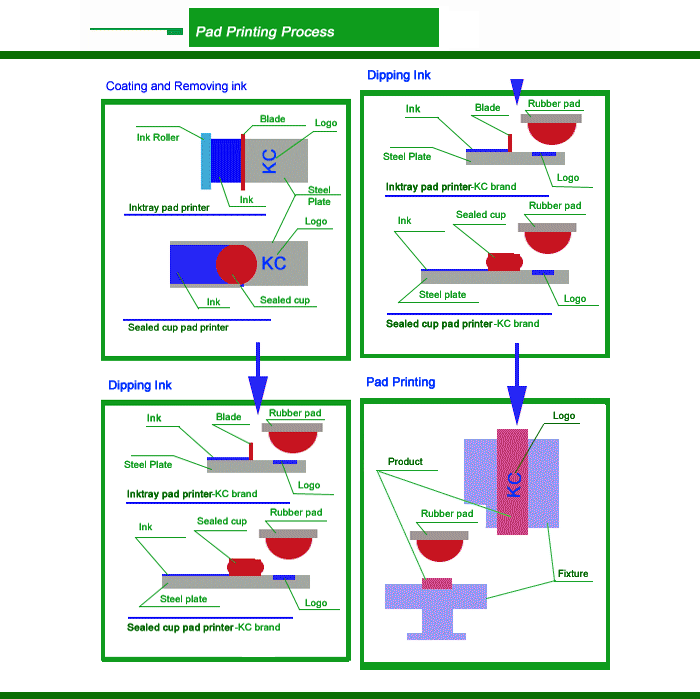The main difference between OEM and ODM is that the former is the product design proposal by the client - no matter who the overall design is done - ODM and the commissioned party must not provide the third party with the product using the design; the latter from design to Production is done by the producer itself, and the brand is bought after the product is formed.

Whether the producer can produce the same product for a third party depends on whether the OEM has bought out the design. OEM products are tailor-made for brand manufacturers. They can only use the brand name after production. They must not be crowned with the producer's own name for production.
The ODM depends on whether the brand company has bought out the copyright of the product. If not, the manufacturer has the right to organize the production itself, as long as there is no design identification of the company. To put it bluntly, the difference between OEM and ODM is the core of who owns the intellectual property rights of the product. If the entrusting party enjoys the intellectual property rights of the product, it is OEM, which is commonly known as “OEMâ€; and if it is the producer The overall design, that is, ODM, commonly known as "branding." In industrial societies, OEMs and ODMs are commonplace.
Because of the considerations of manufacturing cost, transportation convenience, and development time, well-known brand companies are generally willing to find other manufacturers OEM or ODM. When looking for other companies to carry out OEM or ODM, well-known brand companies also have to bear a lot of responsibilities.
After all, the product is the brand of its own. If the quality of the product is not good, there are few customers who come to the door to complain, but may go to court. Therefore, brand enterprises will certainly carry out strict quality control during the commissioning of processing.
But after the completion of the foundry, the quality is not guaranteed. Therefore, when some merchants tell you that the manufacturer of a certain product is an OEM or ODM product of a certain brand, never believe that the quality is equivalent to the brand.
The only thing you can believe is that this manufacturer has a certain production capacity.
OEM design is provided by the brand, while ODM is the product designed by the manufacturer. [1] The term OEM is simply too common in computer hardware products, such as OEM optical drives, OEM displays, OEM mice or something. Some people even think that it is a quality guaranteed brand.
In fact, OEMs have a close relationship with modern industrial society.
Some well-known branded goods manufacturers often ask other manufacturers for help because they cannot meet the requirements of mass production or need certain parts. These manufacturers are called OEMs (Original Equipment Manufacturers). If it is extended to the IT field, it means those manufacturers who do OEM.
For example, CPU fans, Intel or AMD itself are not produced, they usually look for professional OEMs like Japan Sanyo to make fan OEM production.
In addition, sometimes you will encounter such a situation: When you buy a product (such as an LCD monitor) in Computer City, the merchant introduces the LCD panel of a Taiwan-branded LCD monitor that is OEM of a certain Japanese manufacturer.
In fact, this statement is a rather wrong concept.
First, in order to protect the quality and reputation of the brand, the name of the ODM or OEM company is confidential. If it is said that the brand A notebook is produced by the brand B, then will people buy more expensive A brand products? Therefore, the above example of the LCD display is actually only the Taiwan brand that purchased the Japanese brand LCD panel accessory for production. Good quality or bad, and can not fully believe. So how do you identify if the foundry has adopted the accessories of a well-known manufacturer? Taking the LCD display as an example, its core technology is still controlled by several major manufacturers in Japan and South Korea. Consumers can identify from technical indicators. For example, liquid crystal displays with a contrast ratio of 400:1 are produced by companies such as Hitachi and Fujitsu in Japan, while products with a contrast ratio of 350:1 are mainly from South Korea's Samsung and Japan's NEC. ODM has gained a huge market share in the PC field and has good financial performance, which is in stark contrast to the current difficult dilemma of OEMs. Although ODM has an output value of only 16% of EMS in the same year as OEMs' $9.53 billion in 2001, the latter has a more compelling level of profitability. “Although ODM's revenue base is small, the overall operating expenses are lower, so it produces better profit indicators... Compared with EMS's 10% gross margin, ODM has reached an unprecedented 20% to 25% level,†US GartnerDataquest Company analyst Reiko Tomasch said. Some industry insiders have therefore called for OEMs to adopt the ODM model as soon as possible to have a way out.
In fact, compared with ODM manufacturers, EMS still has many obvious advantages: the size of the funds, the global manufacturing, procurement, logistics and after-sales service, a wide range of products and manufacturing experience. When the market is low, the production capacity is largely idle, and the scale advantage becomes a disadvantage, but in the case of a better economic situation, the OEM can quickly regain its vitality.
In contrast, ODM, its distinctive Chinese main body, the geographical characteristics of Greater China and its narrow product line make people feel that it is not successful in a new and unique business model, but that Taiwan's electronics manufacturing community is in a good position to meet the opportunity of good fortune. . The outstanding advantages of this group are lower incoming prices and lower overall operating expenses. If the OEM can close the cost distance to the ODM, or in areas where cost is not the determining factor, ODM may face significant resistance.
In fact, both groups are struggling to make up for their weakness: some world-class leading OEMs are shifting manufacturing capacity to low-cost Asian regions, trying to localize production and incoming supplies, and some ODMs will reach out to the world. All over the place.
“We will transfer 70% of our production capacity to Asia by the end of this year,†Kennedy, Celestica's new vice president of global supply chain management and information technology, told the media. As the company's production scale in Asia expands, the purchasing power of the region is also strengthening. One of Kennedy's new responsibilities is to manage the company's procurement teams in Hong Kong, China and the rest of Asia. They even transferred a senior purchasing officer from Switzerland to Singapore last fall.
In the European communications industry, OEM company Elcoteq also increased the manufacturing ratio in low-cost regions to 83% at the end of 2002, which is the highest in the OEM industry. The company's expansion in China is particularly rapid, and the number of employees in China has increased from hundreds in 1999 to the current 3,400.
And some ODMs will also reach out to the world. In addition to China's Taiwan and mainland China and Malaysia, BenQ also has facilities in Mexico to support North American operations. Inventec Group has manufacturing bases in the United States and the United Kingdom.
In addition to the geographical dispute, in the business model, the two are also grabbing each other's sites. According to a survey published by American Research Corporation Manufacturing Market Insight (MMI) in April 2002, some OEMs already have comprehensive product design capabilities and are already comparable to ODM in the breadth of design services.
The more prominent EMS manufacturer recently is the Flextronics company based in Singapore.
In fact, they now look more like an ODM company. “We believe that ODM is an effective business model. In fact, we not only provide ODM, but also provide collaborative design and manufacturing (CDM). Our CDM business has a history of 4 years and more than 1,500 engineers are engaged in this work.†Valerie Kurniawan, director of marketing for Flextronics Asia Pacific, said.
And ODM maker Quanta Computer has entered the wireless handset market since 2000. They are small and effective with the help of a customer-licensed reference platform, currently accounting for about 5% of total business. Lehman Brothers analyst Louis Miscioscia said: "As an ODM, Quanta intends to engage in production and assembly operations unrelated to component design. This is a new development direction and a potential threat to EMS companies."
Document.body.oncopy = function () { setTimeout( function () { var text = clipboardData.getData("text"); if (text) { text = text + " This article comes from China Wooden Door Network, China's well-known wooden door industry portal Website! (http://) Detailed reference: "+location.href; clipboardData.setData("text", text); } }, 100) }
 The oiled printing machine is the representative work of environmental protection tendency, which makes the VOC volatilization of the open ink transfer printing machine reduced by 95%. In Europe, the mainstream market is dominated by the printing machine, the open printing machine is only in eastern Europe, the cis countries have a certain distribution. In the long run, the oil-cup printing machine will spread to Asia, America, and Africa, and will be popularized in some large enterprises. However, the printing speed of the printing machine is challenging, it is difficult to manufacture, and the friction resistance of the oil cup and steel plate is a thorny problem. To explore from a perspective of printing pad printing machine, the cleaning device is an obvious progress, theory proves that the glue head can only transfer 67% of the ink, while 33% of ink will remain on the surface glue head into the next cycle, the viscous ink, some residual ink will re-enter the ink link, and part to remain in the rubber surface hinder the transfer of ink, in the first period of aging, the phenomenon is more serious, the cleaning device can will remain on the surface of the rubber head, 93% of ink wash, reduces the impact of a print link.
The oiled printing machine is the representative work of environmental protection tendency, which makes the VOC volatilization of the open ink transfer printing machine reduced by 95%. In Europe, the mainstream market is dominated by the printing machine, the open printing machine is only in eastern Europe, the cis countries have a certain distribution. In the long run, the oil-cup printing machine will spread to Asia, America, and Africa, and will be popularized in some large enterprises. However, the printing speed of the printing machine is challenging, it is difficult to manufacture, and the friction resistance of the oil cup and steel plate is a thorny problem. To explore from a perspective of printing pad printing machine, the cleaning device is an obvious progress, theory proves that the glue head can only transfer 67% of the ink, while 33% of ink will remain on the surface glue head into the next cycle, the viscous ink, some residual ink will re-enter the ink link, and part to remain in the rubber surface hinder the transfer of ink, in the first period of aging, the phenomenon is more serious, the cleaning device can will remain on the surface of the rubber head, 93% of ink wash, reduces the impact of a print link.
Over Six Colors Pad Printer,Over Six Colors Large Pad Printer,Over Six Colors Ink Well Pad Printer
KC Printing Machine (Group) Limited , https://www.kcautopm.com